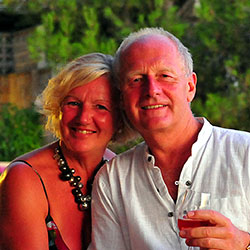One for your wishlist when the world settles down! If, like us, you’re prone to getting ‘templed out’ on your travels, when an endless stream of religious sites tests your faith, you’ll be surprised to find that you’re completely mesmerised by the thousands of temples at Indein.
Myanmar alternates between a no-go area and a magical destination to explore, dictated solely by political policy and actions. Here’s our review from happier times that hopefully will return soon.
If you’ve read our previous article about life on Inle lake, you’ll know that we’ve spent much of our time in a longtail boat, motoring from one end of this vast inland lake to the other.
Today we’ve found ourselves at a small village called Indein, at the western end of the lake, reached through the Inn Thein creek, a long narrow vegetation clogged canal. We’re lucky, as this scenic 8 kilometre boat ride can only be made in the rainy season and winter when water levels are high enough.

Indein is known for its market and two groups of ancient pagodas in varying states of repair.
To halt endless questions, we’ve had explained to us the differences between Temples, Pagodas and Stupas, as well as renovation and restoration and although it’s all open to interpretation, depending on who you talk to – if you didn’t know already, its roughly as follows.

The presence of Buddha denotes a Pagoda
Pagodas feature an effigy of the Lord Buddha, Temples are places of worship without a Buddha but with ‘Nats’ (or Gods) who are Buddha’s acolytes. Stupas are memorial spires to notable royalty, high born, wealthy or notable family individuals.
The difference between renovation and restoration is simpler but more controversial in Myanmar.
Restoration is not as glossy but endeavours to preserve and protect as much of the original work as possible, so that the building is a representation of its former self but showing the narrative of time.
Renovation tends to have been undertaken by less diligent bodies; such as the military elite, who wishing to curry favour with the Gods have ‘tarted up’ the buildings and largely overwritten their former character. Whereas the renovated buildings are more ‘attractive’ they are a far less faithful representation of the original constructions and therefore historically inaccurate.
Our arrival at Indein coincides with the ‘five day market’, which unsurprisingly rotates through five villages every five days, where the The Pa-Oh people from the surrounding hills sell their crops.

It’s an interesting spectacle but as we’ve already spent some time around Inle markets, we choose to walk to the first group of ruins – the Nyaung Ohak pagodas.
These pagodas have been left in their original state and although many are well preserved, have crumbled and fallen in a haphazard manner but nevertheless represent an authentic picture of the earliest constructions.

Trees and shrubs grow from and weave around their masonry, pillars lean or have fallen and the undergrowth is rapidly reclaiming the land they’re built upon. Little wonder that Nyaung Ohak means ‘group of Banyan trees’.
Local women with baskets on their heads bring colour to the area with their wares and traditional dress, whilst sculptures of celestial beings or mythological animals add a sense of mystery.
From Nyaung Ohak we now climb to the second group of pagodas – Shwe Inn Thein – located at the top of a hill.

Our access to the site is along a 700 metre pillared and covered stone walkway, where nowadays we run the gauntlet of stalls where vendors sell local crafts to those, who faint of heart, fall into the retail trap and are delayed to their cost in the quest to reach the pagodas.

This site possibly dates back to the Indian emperor Ashoka, who despatched monks throughout Asia to spread Buddhism in the 3rd century BC. It wasn’t until hundreds of years later that two Kings of the Bagan empire, Narapatisithu and Anawrahta built pagodas on the site.
Although the earliest dates by inscription to the 14th century, the many thousands of pagodas and stupa – collectively known as the Shwe Inn Thein pagodas – are mainly from the 17th and 18th centuries.

We wind our way up the hill and initially are met by countless stupa in warm red brick and clay, in varying states of repair. Whichever way we look we’re surrounded by these ancient spires where glimpses of the surrounding countryside peep through between their clustered ranks.
As they’re not such a spectacle to most, we’re able to spend time in quiet and peaceful contemplation of the earlier civilisations that used this site as memorial to their ancestors.

As we move further uphill, so the stupa become more modern and reveal the glitter and gloss of less enlightened renovators. Gold leaf abounds; glitz and bling prevail.

That’s not to say that they‘re not impressive and the various donors, both Burmese and foreign have turned the area into a shiny spectacle, at the centre of which is the shrine of the Inn Thein Buddha.
If you have no interest in religious sites at all, you still can’t fail but be impressed and somewhat awed by the spectacle that confronts you at Inn Thein. If nothing else, you could satisfy your entire desire for temple tours in one place! Certainly, it offers endless photographic opportunities.

We meander back down the hill, avoiding the ‘gauntlet of pillars’ and spend a little more time in an area of excessively overgrown stupa, where time and neglect have created an aura of magic and mystery and where we’re in company with birdlife rather than bustling tourists; able to imagine how Inn Thein was for the ancients before nature reclaimed her land.

If you’d like to combine a visit to Inle Lake and Inn Thein in Myanmar with your own adventure to anywhere in Southeast Asia, then why not ask us to arrange your own tailor-made travel – to immerse yourself in the wonders of this world?

 Let us plan your own inspiring journey to exotic climes
Let us plan your own inspiring journey to exotic climes
Why not download the TLC World guide brochure or give us a call today on 01202 030443, or simply click ‘enquire’ to submit your own personal itinerary request































